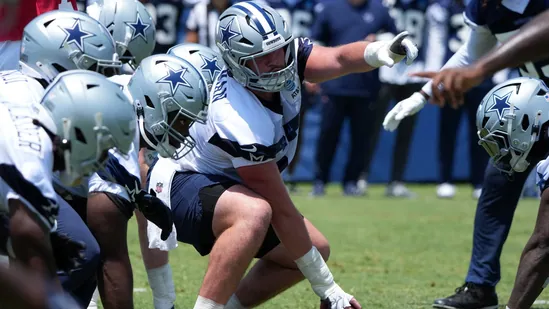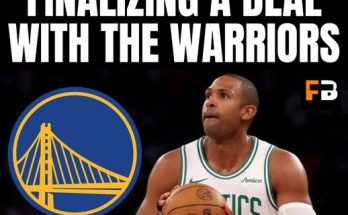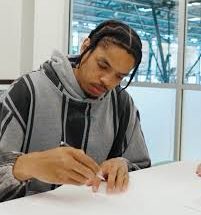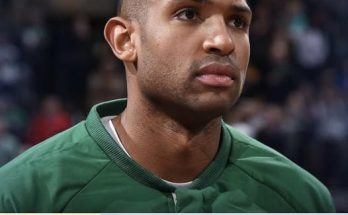The Dallas Cowboys find themselves at a pivotal point as the 2025 NFL training camp approaches, and not just because they’re looking to improve on last season’s shortcomings. In a move that sent waves through the team’s fan base and league observers alike, the Cowboys announced that they will sideline four key players—cornerback Trevon Diggs, wide receiver Deontez Butler, linebacker DeMarvion Overshown, and safety Juanyeh Revel—before the start of training camp. While speculation quickly bubbled up on social media about possible injuries or disciplinary issues, the organization emphasized precaution and long-term planning. The decision has sparked considerable dialogue about player health, team strategy, and the long game of NFL management, especially for a franchise with Super Bowl ambitions.
To understand the gravity and rationale behind this move, it’s important to break down the individual circumstances of each sidelined player, the broader implications for the roster, and what this reveals about the current philosophy driving the Cowboys’ front office. The sidelining of Trevon Diggs, arguably the most high-profile name in this group, is perhaps the most unsurprising. Diggs tore his ACL in September 2023 and missed the remainder of that season. Though he returned for limited work in OTAs earlier this summer, the Cowboys’ coaching staff has made it clear they’re not going to rush him into full-contact situations before he’s ready. With the NFL being as physically demanding as it is, reinjury is a constant risk. Rushing Diggs back into full training camp mode could jeopardize his season—or his career. Instead, the Cowboys are opting for a more measured approach that keeps his long-term viability in mind.
But Diggs isn’t the only player being watched carefully. DeMarvion Overshown, a third-round pick from Texas in the 2023 draft, also missed the entirety of his rookie campaign due to a preseason ACL tear. Overshown was expected to inject youthful athleticism and sideline-to-sideline coverage ability into the linebacker corps. His potential remains enormous, but, like Diggs, he represents a valuable asset that the Cowboys want to bring along cautiously. The franchise clearly sees him as part of the defensive future and understands that pushing him into full-contact drills too early could derail that future.
While Butler and Revel may not have the same marquee status as Diggs and Overshown, their inclusion in this sidelining move is equally revealing. Deontez Butler, a UDFA who turned heads last year with a surprisingly strong preseason and earned himself a spot on the practice squad, was battling for a bigger role in 2025. The Cowboys had been vocal about giving him more reps and seeing if he could become a reliable option behind CeeDee Lamb and Brandin Cooks. Reports indicated that Butler had been nursing a lingering hamstring issue during minicamp, and while it’s not serious, the team is wisely taking a preventative stance.
Then there’s Juanyeh Revel, a versatile defensive back who has bounced between corner and safety, depending on the Cowboys’ needs. A standout at Duke, Revel was viewed as a developmental prospect with upside as a nickel or special teams contributor. Like Butler, he’s dealing with minor ailments—a mild groin strain in his case—that don’t appear serious but could become problematic if aggravated. The team’s decision to hold him back speaks to a broader shift in NFL culture: caution is often the smartest investment a team can make when the goal is a deep playoff run rather than just a strong start to the season.
This measured approach to player health and readiness reflects a larger philosophical shift in the way NFL teams manage their rosters in the offseason. The days of grinding through brutal training camps with little regard for long-term physical toll are fading fast. Sports science, biomechanics, and injury prevention have become pillars of team operations. Coaches are no longer judged solely on wins and losses but also on their ability to keep star players healthy and available when it matters most. For the Cowboys, a team perennially under the microscope, the stakes are even higher. Every decision, every move is scrutinized, both internally and externally.
It’s also essential to understand the competitive window the Cowboys believe they are in. With Dak Prescott entering what could be his final season under his current contract and CeeDee Lamb already making a strong case for a mega-extension, the Cowboys know they have to capitalize on the talent they currently possess. That means balancing aggressive roster-building with careful preservation of existing assets. In sidelining Diggs, Overshown, Butler, and Revel before camp begins, the Cowboys are sending a message: this season is a marathon, not a sprint.
And yet, for all the logic in the move, it also creates immediate challenges. Training camp is where cohesion and chemistry are forged. Reps are invaluable, particularly for young or returning players who need to shake off rust or establish their roles in a competitive depth chart. Diggs may be a known quantity, but Overshown hasn’t played a regular-season down in the NFL. Butler is still trying to prove that last preseason wasn’t a fluke. Revel is fighting to avoid the dreaded “camp cut” label that ends so many promising careers before they begin. Missing camp time puts all four at a competitive disadvantage, even if it keeps them physically safer.
The Cowboys coaching staff, led by head coach Mike McCarthy and defensive coordinator Mike Zimmer, will have to get creative to compensate for those absences. In Diggs’ stead, expect increased snaps for players like DaRon Bland and Stephon Gilmore, assuming Gilmore himself is fully recovered and ready to go. Bland, who led the NFL in interceptions last season, will likely be asked to shoulder CB1 responsibilities in the early going. His performance will be pivotal in determining whether the Cowboys’ secondary can hold the line until Diggs returns to full strength.
On the linebacker front, Overshown’s absence opens the door for players like Damone Clark and free-agent acquisition Eric Kendricks to establish themselves early in camp. Clark is a fascinating case study in his own right—a high-upside linebacker who fell in the draft due to injury concerns but has flashed elite traits when healthy. His ability to step up in Overshown’s absence could have a ripple effect on how the Cowboys manage their linebacker depth throughout the season.
The wide receiver group, meanwhile, is one of the most scrutinized units in Dallas. With Lamb entrenched as the No. 1 option and Cooks providing veteran leadership, the question becomes who can fill the WR3 and WR4 roles. Michael Gallup is gone, and Jalen Tolbert remains inconsistent. Butler had a real shot at pushing for snaps in this rotation. His sidelining means more reps for rookies and practice squad graduates, increasing the likelihood that an under-the-radar player emerges to seize a roster spot. But it also makes it harder to get a read on Butler’s long-term viability in a crowded room.
Revel’s situation is arguably the most precarious. As a fringe roster player without guaranteed money or draft pedigree, missing time at training camp is usually a death knell. Coaches may admire his versatility and intelligence, but the NFL is ruthlessly competitive. If another undrafted player or rookie free agent impresses in Revel’s absence, the depth chart will adjust accordingly, and opportunities may dry up. His best hope is that the team values his long-term potential enough to keep him on the roster bubble, even without a strong camp showing.
Beyond the individual impacts, the sidelining of these players speaks to the evolving nature of training camp in general. What was once a grueling, high-contact proving ground is increasingly becoming a laboratory for data-driven decision-making. Players wear GPS trackers to monitor workload, soft tissue injury risk, and fatigue. Every rep is charted, every sprint timed. Coaches use real-time information to determine when to pull a player back and when to push him harder. In that context, the Cowboys’ decision isn’t surprising at all—it’s modern football at its most calculated.
But calculated doesn’t mean risk-free. The danger in preserving players too much is that they don’t get enough real-game reps to acclimate to the speed and violence of NFL action. This is especially true for Overshown, who has never played a regular-season NFL snap. Mental reps are useful, but they’re no substitute for diagnosing a play at full speed, getting off a block, or executing a live tackle. The Cowboys must walk a tightrope, ensuring these sidelined players are healthy enough to contribute while not falling so far behind in preparation that they become liabilities when the games start counting.
Fans, understandably, want to see their team at full strength. Cowboys fans in particular are known for their passion and impatience in equal measure. After decades of championship drought, there’s an urgency permeating the franchise. They don’t just want to make the playoffs—they want to win it all. And while sidelining key players in July makes sense from a medical standpoint, it does little to soothe the anxieties of a fanbase hungry for a deep postseason run.
Ultimately, the Cowboys are betting on patience paying dividends. They believe that holding back Diggs, Overshown, Butler, and Revel now will increase the likelihood that all four are available when the season’s biggest games arrive. It’s a bet rooted in medical science, statistical analysis, and long-term thinking—a far cry from the old-school “tape it up and go” mentality of years past.
The NFL season is a war of attrition as much as it is a competition of talent. Teams that manage injuries effectively, preserve their stars, and build depth behind them often find themselves still playing football in January and February. By being proactive now, the Cowboys hope to join that group.
Only time will tell if this strategy works. But in a league where the margin for error is razor-thin, doing everything you can to protect your key assets may not just be smart—it may be necessary. The Cowboys are all-in on 2025. Whether sidelining these four players before camp proves to be a genius move or a missed opportunity will be written in the season’s final record. But for now, one thing is clear: Dallas is playing the long game. And that’s a game that often separates contenders from champions.



